PVC primer is a crucial component to ensure that your pipes and fittings are adequately prepared for a secure and long-lasting connection.
It is a chemical solution that is specially designed to clean and soften the surface of PVC materials.
This ultimately results in a stronger bond when using PVC cement. Not only does it aid in the installation process, but it also removes any surface contaminants that may be present.
But it’s not just for plumbing; PVC primer is also widely used in industrial, commercial, and residential constructions.
If you want to ensure your PVC piping project is a success, make sure you understand the importance of PVC primer.
To maximize joint strength and longevity, PVC primer is applied before joining the joints. Even without primer, welds will still connect, but they won’t be as strong since primer penetrates the material beneath the cement.
What Is PVC Primer?
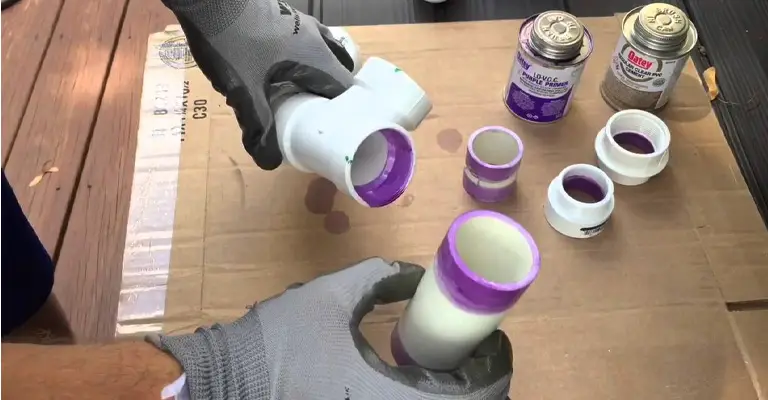
It is typically applied to joins between PVC pipes to protect them from corrosion. As soon as PVC primer is applied, a chemical reaction occurs, which softens the PVC pipe so that PVC cement will adhere effectively.
The two parts of the PVC joint aren’t precisely “glued” together; they’re bonded through a change in chemical composition. As a result of the primer, the pipe will be softer, allowing better sealing of joints.
What Is PVC Primer Made Of?
Generally speaking, PVC primer is composed of two main chemicals, acetone and cyclohexanone. Chemicals are also added to some products, such as tetrahydrofuran and methyl ethyl ketone.
What Does PVC Primer Do?
Do you have a question about whether to use PVC primer for all of the joint connections? In the following paragraphs, we will explain what a PVC primer does.
1. Strengthens Pipe Joints
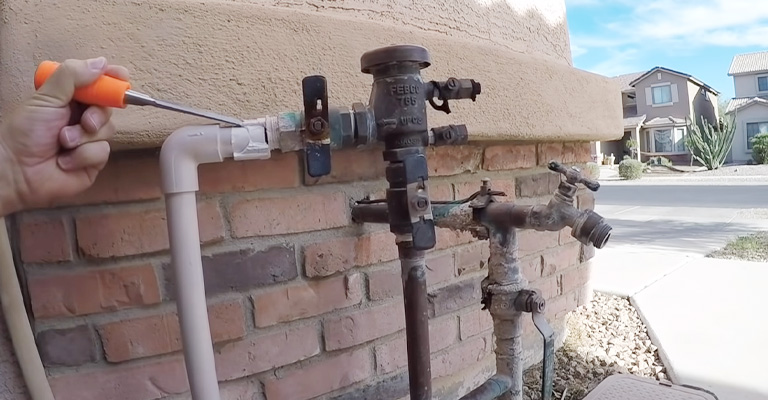
PVC primer is usually applied to the joint connections between PVC pipes. By doing so, you can ensure leak-free connections by increasing the strength and durability of your connections.
What are the details of this process? Primer softens PVC surfaces by causing a chemical reaction once it is applied to the joints. Consequently, the PVC surfaces are firmly bonded together by the cement.
2. Helps Paint Adhere Better
It is best to use a PVC primer to ensure the paint adheres more effectively to PVC pipes. Nevertheless, you should sand your PVC pipes before priming them.
3. Expedites Inspection Process
It is necessary to use purple PVC primer for industrial applications instead of clear PVC primer. PVC primer makes it easy for a building inspector to tell whether you used it while fitting PVC pipes. Most states require inspectors to visually inspect every joint as a law requirement.
4. Cleans PVC Surface
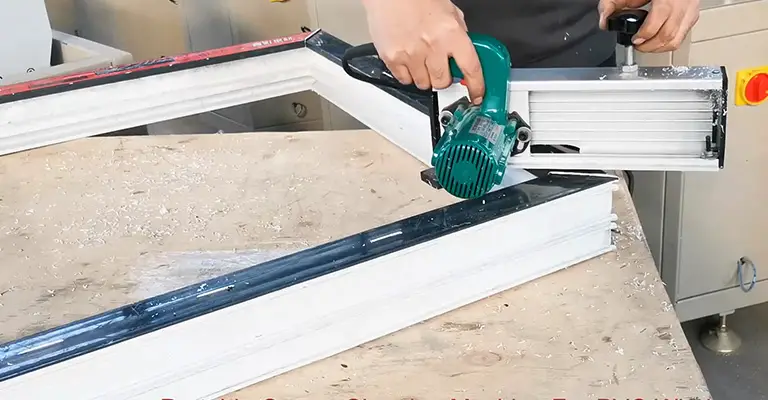
PVC surfaces must be cleaned prior to fitting PVC pipes. Using PVC primer after cleaning the pipes will eliminate any dirt that remains. According to the primer, it is designed to clean PVC surfaces chemically, even stubborn grime.
Do I Need to Use PVC Primer?
If liquid media passes through a joint, we recommend that you use primer on the joint. It provides the solvent cement surface with an even prepped surface and starts the chemical reaction that softens PVC.
It is worth noting that PVC joints are not exactly glued together but are fused through a chemical process.
It is better to have a softer outer layer of PVC for a joint because it will cement better. The strength of your joints is increased by primer.
Some states require plumbing inspectors to check all joints for primer and pass you only if liberal amounts are present. Most primers are purple to make it obvious that they are being used, but clear primers are also available.
You should determine if a state requires the use of a primer if you are working on an inspected job.
Consider a brand that offers a colored primer that will be easy to see and liberally apply it beyond where the pipe will meet the socket. There is no point in using it if the inspector can’t see it.
Ensure you are fully prepared for priming AND cementing when it is time to apply your primer.
When you begin, you should move quickly because the primer is only effective when wet. PVC projects are usually half the cost of cement because they require half the amount of primer.
The primer in your arsenal will be your best friend. You may not need to take every precaution available on all jobs, but we recommend you take all precautions to ensure your joints are leak-free and robust.
Is PVC Primer Necessary For PVC Pipes?
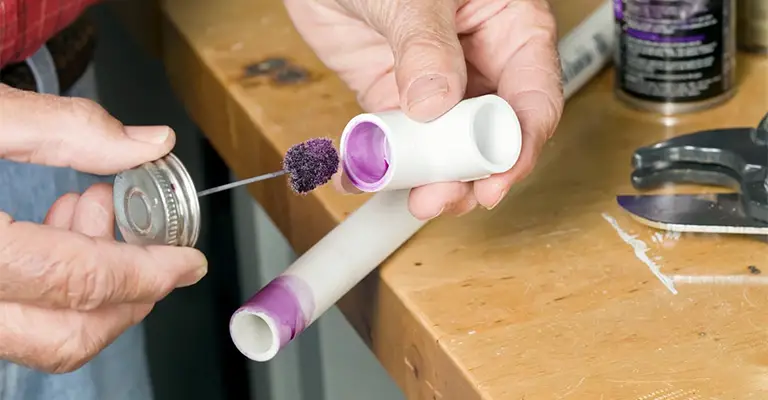
The importance of PVC primer varies depending on who you ask, from tradesmen to DIYers.
Those who swear by it slather it liberally over their PVC joints, while others argue that you can make strong connections even without primer.
Is it one or the other? Would it really be necessary to do this, and is there anything else you could substitute that would be cheaper?
A PVC primer, though not required for all applications, will help ensure your pipe joints remain leak-free and sturdy.
Almost all major building authorities in Australia recommend using PVC primer (also known as priming fluid) when joining PVC pipes with solvent cement.
Per AS/NZS 3500 Plumbing and Drainage Standards, primers are required when joining PVC-U and PVC-M pipes with PVC solvent.
PVC primer is useful for all kinds of DIY projects, whether you are doing plumbing work for inspection or simply doing repairs around the house.
Despite this, PVC primers can be challenging to use and unforgiving, just like any industrial product.
It is very easy to make mistakes and mishaps when applying PVC primer, and it can be irreversible if you don’t know how to do it correctly.
There can be frustration associated with clean-up or the need to replace pipe sections. To apply PVC primer properly, one must pay attention to timing, technique, and a bit of know-how.
The good news is that you don’t have to spend hundreds on getting a professional to join PVC pipe. This guide will explain why PVC primers are important for creating airtight joins and how to use them.
What Kinds Of PVC Primer Are There?
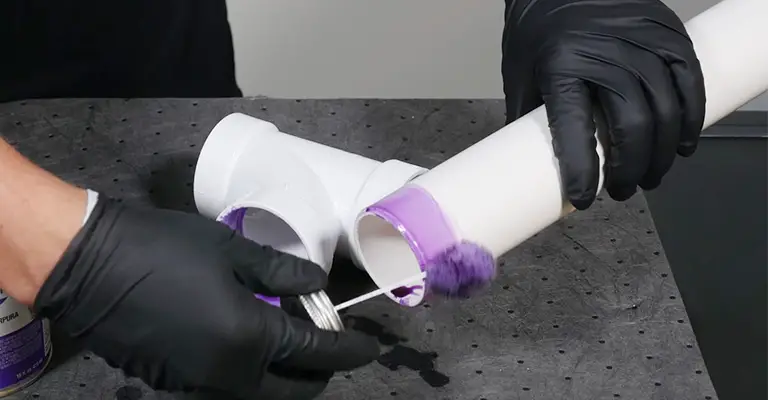
Although PVC primers are typically colorless, some variants are colored – usually purple or red. It’s for a couple of reasons: PVC primer makes it easy to tell where it has been applied.
Additionally, building inspectors can easily determine if PVC primer is used. In countries where PVC primer is mandated, you can’t pass plumbing inspection if you don’t use it.
Among the Plumbing and Drainage Standards in Australia and New Zealand is the requirement to use priming fluid and a red PVC primer.
What’s The Difference Between PVC Primer And PVC Cement?
Also known as PVC cement, PVC primer can be confused with the latter. Although they are both different materials, they should be used together for the best results.
Simply put, the priming fluid sets up the PVC cement for optimal performance. It decreases the surface and removes dirt like a PVC cleaner, which works together as a cleaner and softener.
PVC pipes can be joined together due to a change in their chemical composition.
As a result, the solvent cement effectively binds the two parts together, making them inseparable. The primer has softened the PVC surface, making the bond stronger.
What’s The Difference Between PVC Primer And PVC Cleaner?
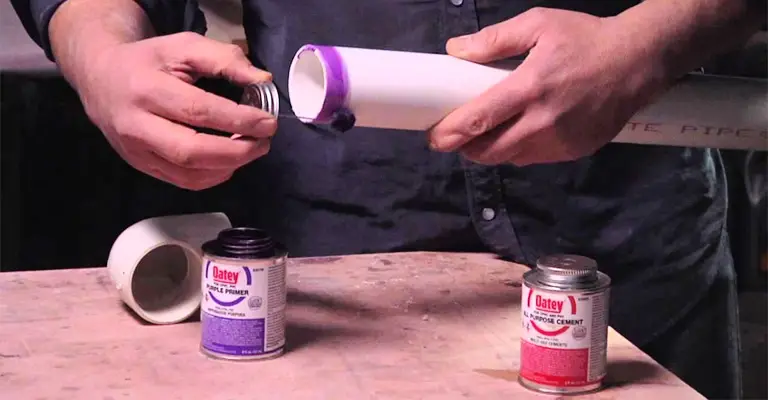
Because PVC primer can act as a cleaner, PVC cleaner is sometimes misidentified as PVC primer.
But it’s important to make a distinction between them. PVC cleaner removes oil, grease, and other filthy substances from the outer layer of the pipe.
A primer can soften and prepare pipes to be connected securely, but it cannot do what it cannot. PVC cleaners will work on the joints, but you will still need PVC primer afterward.
Is PVC Primer the Same as Glue?
Even though they contain the same active ingredient, tetrahydrofuran, there is no difference between them.
The PVC primer acts as a cleaner between these two types of PVC adhesive. Also, it softens and strengthens the joints of PVC pipes and fittings.
As opposed to this, PVC glues bind PVC parts together permanently. Therefore, separating these two parts is typically difficult unless you cut the pipes.
Another difference is that you cannot use PVC primer when connecting PVC fittings. Instead, glue is required.
How Long Do You Let PVC Primer Sit?
Whenever you’re done applying the primer, hold your joints for 30 seconds. You’ll need to let the primer sit for about 15 minutes. That’s enough time to make your PVC handle well.
It is recommended that you leave the primer for two hours to cure completely. To achieve this, the temperature should be above 60 degrees Fahrenheit. You can use high water pressure after 2 hours with no problem.
Final Words
When it comes to PVC primer, it is difficult to tell what impact it will have. However, failure to use PVC primer can result in premature problems with plumbing joints, even after five or ten years have passed.
In particular, if the work isn’t done by the homeowner, the contractor might not even be aware of the consequences – but using PVC primer makes a real difference to the longevity of the joint.
To prevent liquids from entering the pipe, it is recommended (and in some locations, it is mandated by law) to use PVC primer.







